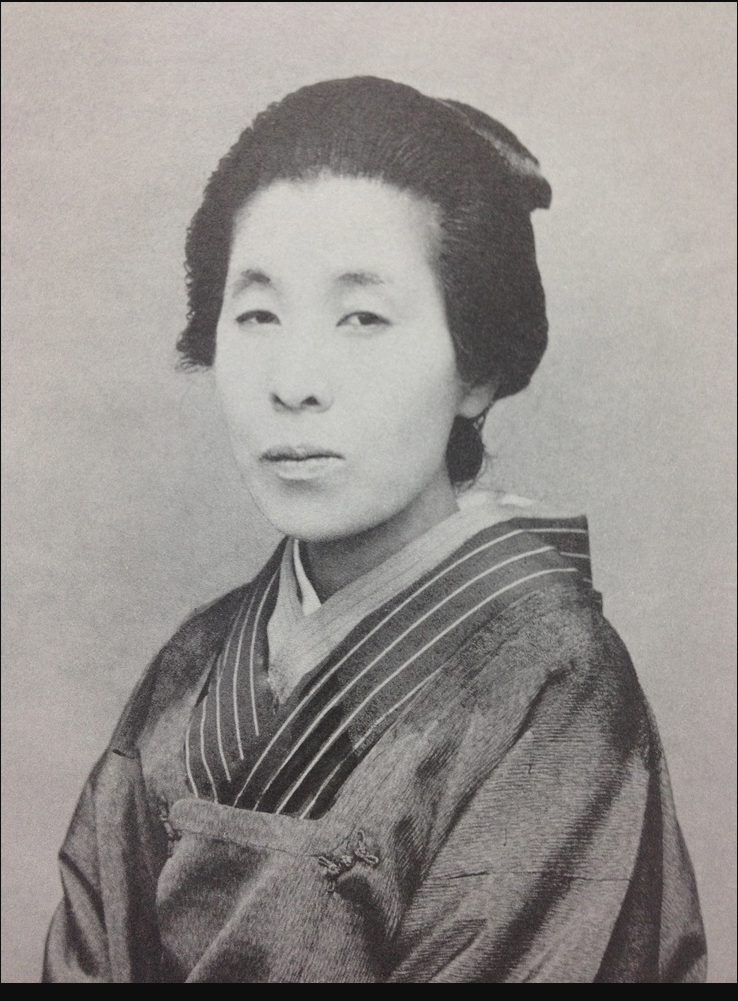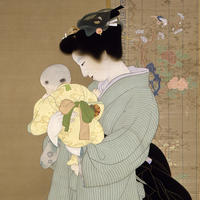More about Shōen Uemura
Works by Shōen Uemura

Contributor
Uemura Tsune (aka Uemura Shōen) was born in 1875 to a newly-single mom in the Kyoto, Japan.
Uemura's father died two months before her birth, leaving Mrs. Uemura to raise their daughter alone while running a local tea shop where Uemura’s love affair with art began. Right after graduating elementary school, Uemura marched off to attend the first established Japanese art school, conveniently located in her hometown of Kyoto. She decided that this new-fangled way of learning wasn’t for her, though, and after a year of art school she left to apprentice with the artist Suzuki Shonen. There she studied the bijin-ga style of painting, which literally just consists of painting pretty women. When Uemura left Suzuki’s tutelage she changed her name to Shoen, in honor of her teacher.
By the time she was 15, Uemura was already a beast at painting and was exhibiting works, winning awards for them, and building a following of patrons. She even sold a work to Prince Arthur of Wales and Duke of Connaught at 15! If that doesn’t say badass, I don’t know what does. Uemura would go on to study under other great masters but eventually found herself back with Suzuki. Only, not as a student, at 27 years old she was impregnated by her former teacher. Suzuki never acknowledged the baby, mostly because he was already married with kids, so Uemura became a single mother.
Today, single moms aren’t uncommon, but in 1800s Japan Uemura raised A LOT of eyebrows. It didn’t help that she was a woman working in a male-dominated field. The sexist and prejudiced anger surrounding her success reared its ugly head in 1904 when her exhibition was vandalized. Instead of taking her works and running for the hills, Uemura asked that her works continue to be displayed as they were to show the truth of what she had to deal with daily. Way to stick it to the bullies, girl!
Uemura continued to stir up anger and accumulate awards, even when she went through a dark period in her 40s after she broke up with her lover. That was when she forced her competition to take her seriously by making them feel the anger she did through her works, which was unique to the bijin-ga style. In 1934, Uemura’s mother passed away and her work began to revolve around the relationship between moms and their babies. Some of the works during this period were inspired by her childhood memories of her own mommy.
Uemura would pass away from cancer in 1947, but not before she committed her final act of awesomeness and became the first woman to ever earn the Order of Culture, an honor which her son would also receive. Uemura may have just painted pretty ladies, but she didn’t do it the way most people expected her to. She painted average everyday women and painted them the same way she would paint a princess: with elegance, poise, and grace. Her goal was to keep them beautiful while still conveying a quiet strength in their spirit. She did so much for everyday women and never once called herself a feminist , she simply lived her life as one. Talk about your thoroughly modern ladies.
Sources
- eff Hammond and Jeff M. Hammond, "Women of quiet strength," The Japan Times, September 24, 2010, , accessed February 17, 2017, http://www.japantimes.co.jp/culture/2010/09/24/arts/women-of-quiet-stre….
- "Uemura Shoen," Uemura Shoen, , accessed February 17, 2017, http://www.gallery-sakura.com/search/uemura_shoen.html.
- "上村松園 | 足立美術館|ADACHI MUSEUM OF ART," 上村松園 | 足立美術館|ADACHI MUSEUM OF ART, , accessed February 20, 2017, https://www.adachi-museum.or.jp/en/archives/collection/uemura_shoen.
Featured Content
Here is what Wikipedia says about Uemura Shōen
Uemura Shōen (上村 松園; April 23, 1875 – August 27, 1949) was the pseudonym of an artist in Meiji, Taishō and early Shōwa period Japanese painting. Her real name was Uemura Tsune. Shōen was known primarily for her bijin-ga, or paintings of beautiful women, in the nihonga style, although she produced numerous works on historical themes and traditional subjects. Shōen is considered a major innovator in the bijin-ga genre despite the fact she often still used it to depict the traditional beauty standards of women. Bijin-ga gained criticism during the Taisho era while Shōen worked due to its lack of evolution to reflect the more modern statuses of women in Japan. During bijin-ga's conception in the Tokugawa, or Edo, period, women were regarded as lower class citizens and the genre often reflected this implication onto its female subjects. Within the Taisho era, women had made several advancements into the Japanese workforce, and artistry specifically was becoming more popular outside of pass times for the elite, which opened way for Shōen's success. Shōen received many awards and forms of recognition during her lifetime within Japan, being the first female recipient of the Order of Culture award, as well as being hired as the Imperial Household's official artist, which had previously only employed one other official woman in the position. In 1949 she died of cancer just a year after receiving the Order of Culture Award.
Check out the full Wikipedia article about Uemura Shōen











